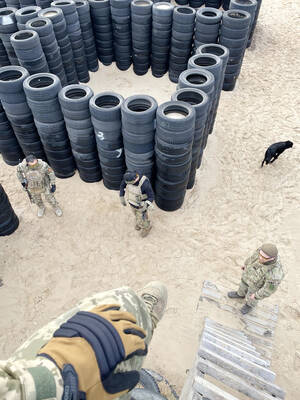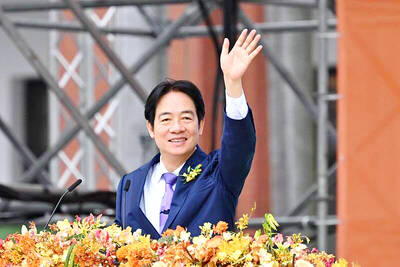If you’re a paleontologist, chances are good you’ve given up on movies altogether.
First, there was last year’s 10,000 BC, which suggested that woolly mammoths helped build the pyramids in Egypt. And now we have Ice Age: Dawn of the Dinosaurs, a film that will lead children to believe that the Jurassic period came after mammoths and saber-toothed tigers walked the earth.
The animated family movie genre isn’t supposed to be documentary filmmaking. (Seen any helium-balloon-powered houses flying through the air lately?) But it’s harder to forgive a 140 million-year mistake when the finished product is mediocre. If the third Ice Age were a bit better, there would be little need to dwell on the inconsistencies.
Ice Age: Dawn of the Dinosaurs will satisfy its young fan base and is bound to make a tonne of money. At this point, though, the series is no longer an artistic pursuit; it’s a business deal. It’s doubtful that the makers of the prehistoric adventure picture added dinosaurs because that story needed to be told — or even made sense in the context of the franchise. They did it because a T. rex looks good on the movie poster.
The film begins with mammoth Manny (voice by Ray Romano) and his pregnant wife Ellie (Queen Latifah) getting ready to settle down. This causes friction with Sid the sloth (John Leguizamo), who wants his own family, and Diego the sabertooth tiger (Denis Leary), who is dealing with unspecified aging issues. Sid finds some dinosaur eggs, and pretty soon the friends discover another world under the ice, which is bright and lush and filled with dinosaurs.
Of the group, Sid has the best story arc. His attempts to nurture three young tyrannosaurs are good for some entertaining physical comedy. Scratte also returns, this time with a love interest. The interludes in the first two films involving the rodent-like creature’s attempts to get a nut were always a nice homage to the classic Warner Bros cartoons; this time there’s a strong Pepe Le Pew vibe. (Scratte’s scenes also tend to look the best in 3-D.)
But too much of the rest of the comedy is uninspired. With most of the characters from the first two films, plus a few new ones in the dinosaur world, there’s barely time to adequately explore anyone’s predictable conflicts. The last half of the movie is a constant state of characters getting rescued — there are rescues within the rescues — interrupted by the occasional slapstick bit or one-liner, too many of which seem to be genitalia-related.
“Let me tell you about the time that I used a clam shell to turn a T-Rex into a T-Rachel,” a weasel character declares in the middle of the film. That’s one of three penis-themed jokes that we counted — which is probably three penis jokes too many in a movie that doesn’t feature Harold and Kumar going to White Castle.
At least the weight-related humor involving elephants is kept to a minimum. Before her career ends, Queen Latifah deserves to be in at least one film where no one makes a single fat joke.

May 18 to May 24 Pastor Yang Hsu’s (楊煦) congregation was shocked upon seeing the land he chose to build his orphanage. It was surrounded by mountains on three sides, and the only way to access it was to cross a river by foot. The soil was poor due to runoff, and large rocks strewn across the plot prevented much from growing. In addition, there was no running water or electricity. But it was all Yang could afford. He and his Indigenous Atayal wife Lin Feng-ying (林鳳英) had already been caring for 24 orphans in their home, and they were in

On May 2, Chinese Nationalist Party (KMT) Chairman Eric Chu (朱立倫), at a meeting in support of Taipei city councilors at party headquarters, compared President William Lai (賴清德) to Hitler. Chu claimed that unlike any other democracy worldwide in history, no other leader was rooting out opposing parties like Lai and the Democratic Progressive Party (DPP). That his statements are wildly inaccurate was not the point. It was a rallying cry, not a history lesson. This was intentional to provoke the international diplomatic community into a response, which was promptly provided. Both the German and Israeli offices issued statements on Facebook

Even by the standards of Ukraine’s International Legion, which comprises volunteers from over 55 countries, Han has an unusual backstory. Born in Taichung, he grew up in Costa Rica — then one of Taiwan’s diplomatic allies — where a relative worked for the embassy. After attending an American international high school in San Jose, Costa Rica’s capital, Han — who prefers to use only his given name for OPSEC (operations security) reasons — moved to the US in his teens. He attended Penn State University before returning to Taiwan to work in the semiconductor industry in Kaohsiung, where he

President William Lai (賴清德) yesterday delivered an address marking the first anniversary of his presidency. In the speech, Lai affirmed Taiwan’s global role in technology, trade and security. He announced economic and national security initiatives, and emphasized democratic values and cross-party cooperation. The following is the full text of his speech: Yesterday, outside of Beida Elementary School in New Taipei City’s Sanxia District (三峽), there was a major traffic accident that, sadly, claimed several lives and resulted in multiple injuries. The Executive Yuan immediately formed a task force, and last night I personally visited the victims in hospital. Central government agencies and the